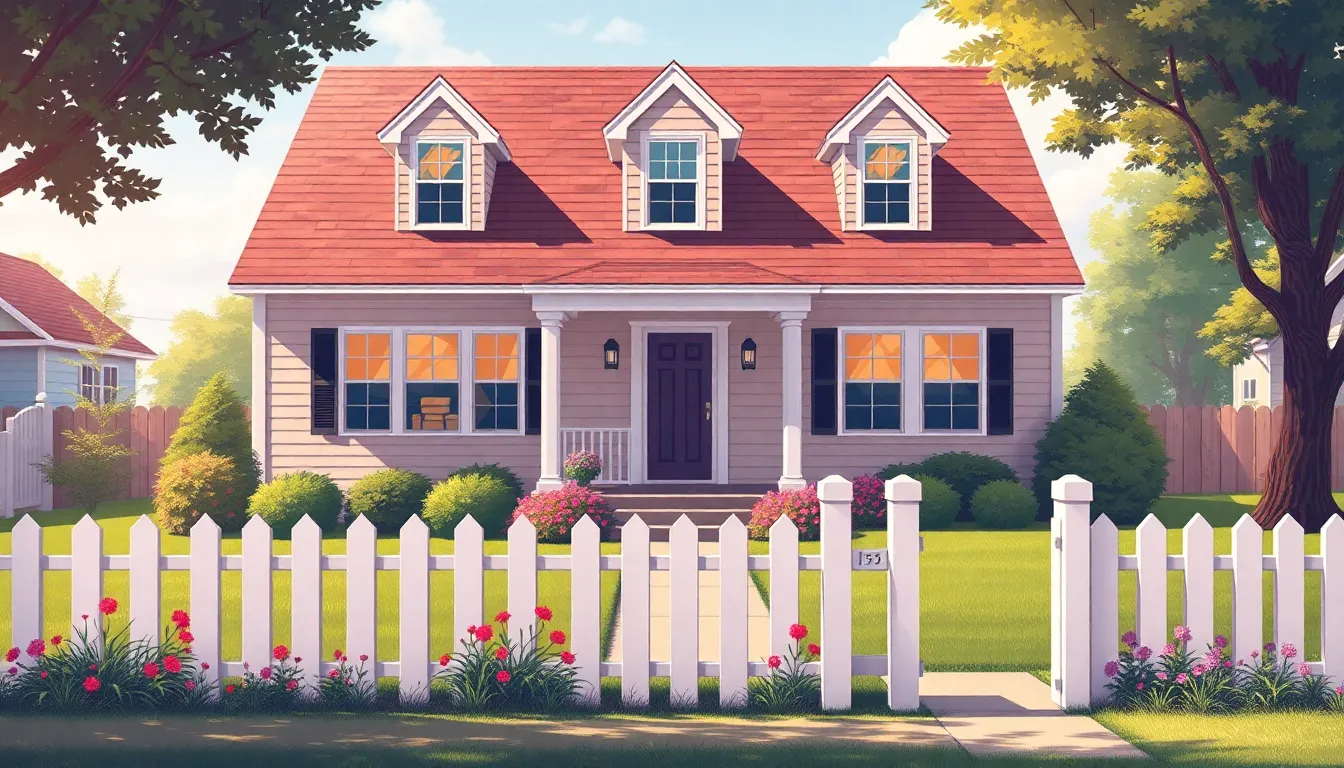When it comes to protecting your castle, a home insurance policy is your trusty moat. Sure, you might think your home is as safe as a fortress, but life has a knack for throwing curveballs—like that time the neighbor’s tree decided to take a nap on your roof. With the right home insurance, you won’t just be left standing in the rain, wondering how to fix that mess.
Home insurance isn’t just a safety net; it’s peace of mind wrapped in a cozy blanket. Whether it’s theft, fire, or that unexpected flood from the washing machine, a solid policy can save the day. So, let’s dive into the world of home insurance and uncover why it’s not just an option—it’s a necessity for every homeowner who wants to sleep soundly at night.
Table of Contents
ToggleUnderstanding Home Insurance Policy
Home insurance protects residential properties from unexpected events. This policy offers financial security for homeowners facing damage or loss.
Definition and Purpose
A home insurance policy provides coverage for damages to a residence and its contents. It safeguards against risks like fire, theft, and certain natural disasters. Homeowners rely on this protection to recover financially after incidents. This policy covers both the structure and personal belongings, ensuring comprehensive security. Peace of mind results from knowing that a financial safety net exists in case of emergencies.
Types of Coverage
Home insurance features several types of coverage tailored to specific needs. Dwelling coverage protects the home structure itself, including walls and roofs. Personal property coverage safeguards possessions like furniture and electronics. Liability coverage protects against lawsuits resulting from injuries on the property. Additional living expenses coverage assists with costs incurred when homes become uninhabitable. Each type plays a vital role in maximizing overall protection for homeowners.
Key Components of Home Insurance Policy

Home insurance policies consist of several key components that ensure comprehensive protection for homeowners. Understanding these components helps in choosing the right policy.
Dwelling Coverage
Dwelling coverage protects the physical structure of a home. This component covers damage from perils such as fire, windstorms, and hail. Homeowners should ensure coverage limits reflect the home’s rebuilding cost. Standard policies typically cover attached structures, like garages. Additional endorsements may provide further protection for specific risks.
Personal Property Coverage
Personal property coverage safeguards belongings inside the home. This includes furniture, electronics, and personal items. Policies often use actual cash value or replacement cost methods to determine payouts. Homeowners must list high-value items for proper coverage. A detailed inventory assists in claiming losses efficiently.
Liability Protection
Liability protection shields homeowners from lawsuits resulting from injuries on their property. Policies cover legal fees and settlement costs up to policy limits. This component typically includes coverage for accidental injuries and property damage caused by family members or pets. Maintaining adequate liability limits can prevent significant financial loss. Homeowners often benefit from increased peace of mind with comprehensive liability coverage.
How to Choose the Right Home Insurance Policy
Choosing the right home insurance policy involves careful consideration of coverage options and costs.
Assessing Your Coverage Needs
Evaluating personal coverage needs starts with understanding property value. Homeowners should consider factors like location, age, and condition of their home. Additionally, assessing the value of personal belongings helps in determining adequate personal property coverage. Liability coverage amount often depends on the homeowner’s risk exposure. People with pets or high-traffic properties generally require higher limits. Identifying special items, such as art or jewelry, may dictate the need for additional endorsements. Finally, recognizing the specific risks in the area, such as floods or earthquakes, plays a critical role in securing necessary coverage.
Comparing Quotes from Different Insurers
Collecting quotes is essential for making an informed decision. Homeowners should contact multiple insurers to obtain various estimates. Each quote should provide detailed information on coverage limits and exclusions. Comparing policy features helps identify which company offers the best value. Factors like deductibles, premium costs, and customer service ratings are crucial in this process. Additionally, online tools or local agents can streamline finding competitive rates. Evaluating financial stability and claims handling reputation of insurers ensures long-term security. Ultimately, informed choices lead to better protection and peace of mind.
Common Exclusions in Home Insurance Policies
Home insurance policies often exclude specific risks, impacting homeowner protections. Understanding these exclusions helps homeowners make informed decisions.
Natural Disasters
Natural disasters, like earthquakes and floods, frequently require separate coverage. Homeowners in flood-prone areas face this exclusion, making flood insurance essential. Earthquake coverage is another optional policy that many overlook. It’s critical for homeowners to assess regional risks and determine if additional coverage is necessary. Without appropriate protection, damages from these events can lead to significant financial setbacks. Homeowners must evaluate their insurance needs based on local geological and weather conditions.
Maintenance Issues
Maintenance issues contribute to another set of exclusions in home insurance policies. Homeowners struggling to keep properties in good condition may find losses from neglect unprotected. For instance, damage due to mold or pest infestations often isn’t covered by standard policies. Regular maintenance and timely repairs are crucial for ensuring adequate insurance coverage. Even seemingly minor problems can escalate into larger issues if not addressed promptly. By understanding these exclusions, homeowners can prioritize necessary upkeep to protect their homes.
Home insurance is more than just a policy; it’s a vital safety net for homeowners. By understanding the various coverage options and their significance, individuals can make informed choices that protect their properties and belongings. Prioritizing adequate coverage not only shields against unexpected losses but also fosters peace of mind in an uncertain world.
Homeowners should regularly review their policies and stay informed about potential exclusions to ensure comprehensive protection. Taking proactive steps today can lead to greater security tomorrow, allowing homeowners to focus on what truly matters—enjoying their homes and lives without the looming worry of unforeseen events.






